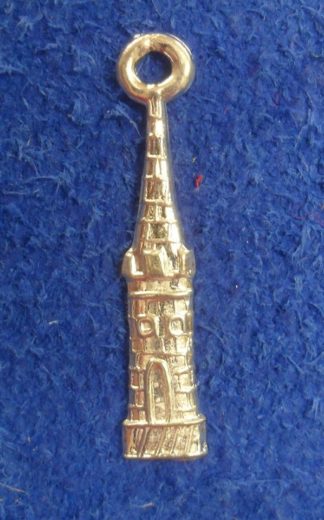Paternosters or Rosaries
Paternosters or rosaries are strings of beads used for keeping track of the recitation of prayers. They came into widespread use in the 14th century, and by the late Middle Ages must have been one of the most common pieces of jewelry worn by all ranks of society. Although the modern rosary has 150 beads divided into ten groups, medieval rosaries varied in the number and arrangement of the beads. The earliest were not loops at all, but straight strings of beads. 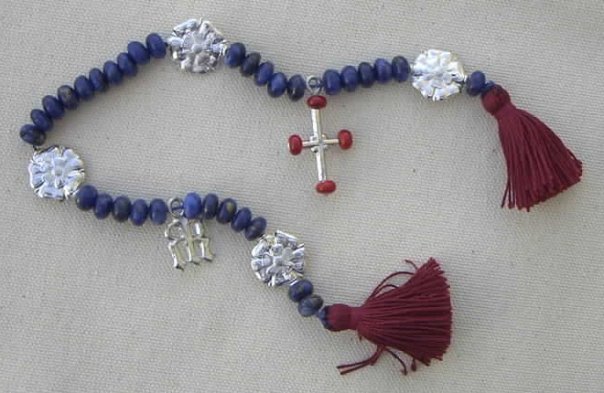
Rosary beads were made of every material from bone and glued-together rose petals to gold, and in a variety of shapes and sizes. The beads used to count recitations of the prayer beginning “Ave Maria” were usually small and plain, and the beads for the “Pater noster” were often larger and more elaborate. These larger beads are sometimes called “gauds.” As you will see by looking at our beads, size is relative, and the same bead may be used as a gaud with small bone beads or as an Ave bead with large, fancy semiprecious stones beads. We sell the beads in packs of five.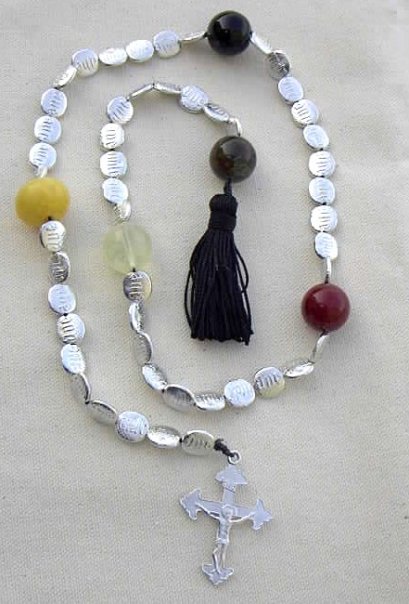
Among our beads are the Five Wounds of Christ, with two hands, two feet, and a heart. See how we cast these beads on our blog.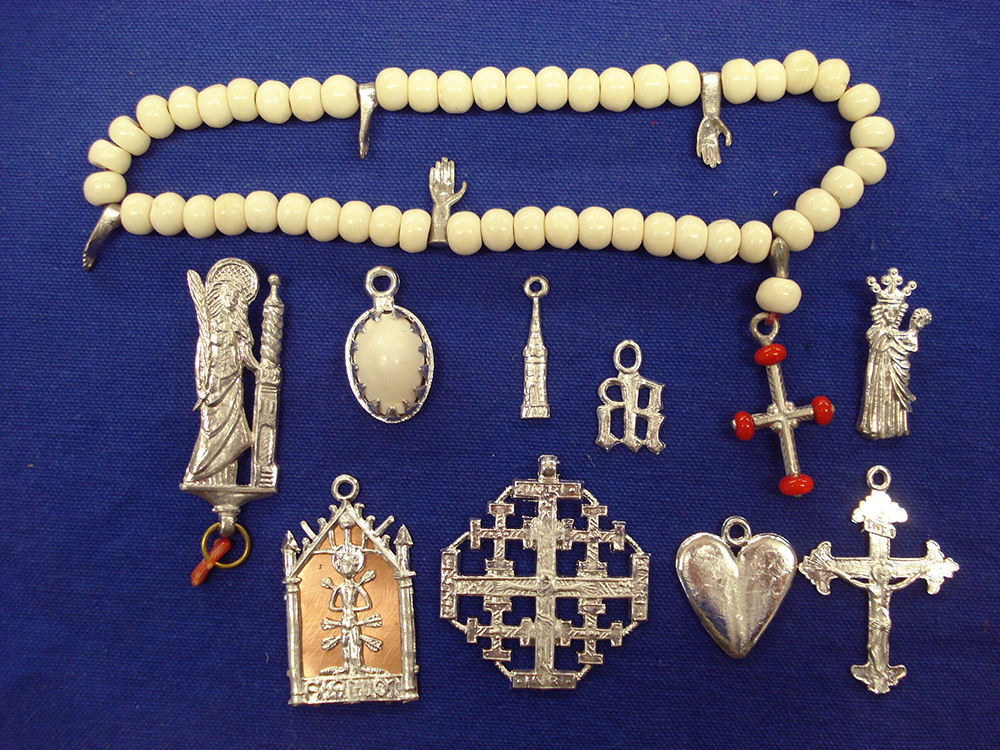
Many of our pendant pilgrim signs and religious medals for items to may be used in paternosters or rosaries. Check the selection below, or see them all.
Showing 1–16 of 18 results
-
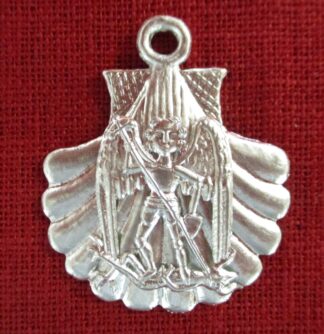
St. Michael on a Scallop Shell Pendant
$7.00 Add to cart -
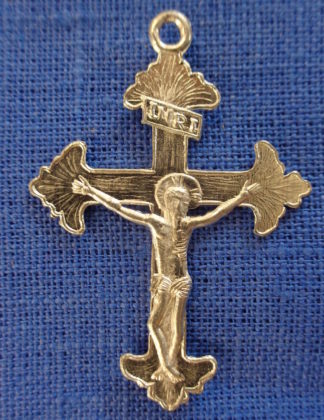
Crucifix Pendant
$5.00 Add to cart -
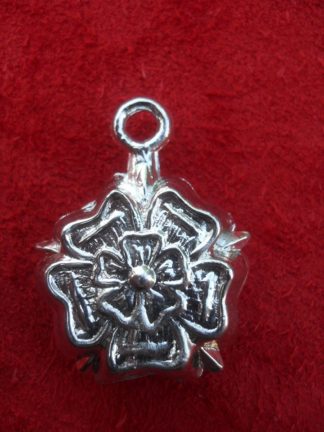
Hollow Rose Pendant
$7.00 Add to cart -
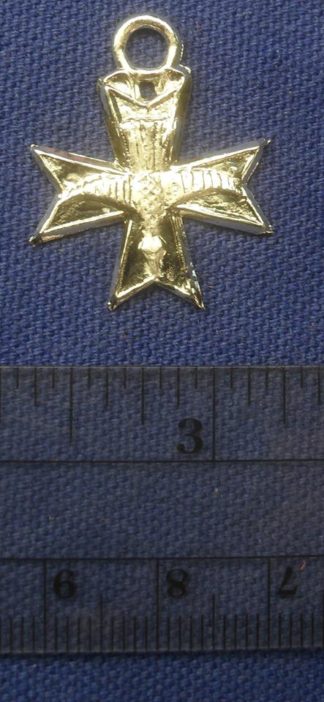
Dove of the Holy Spirit Pendant
$3.00 Add to cart -
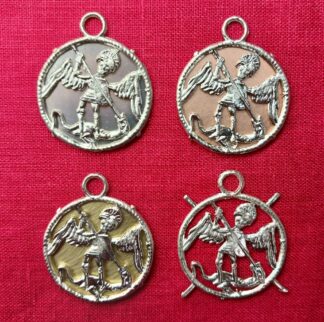
St. Michael Rondel Pendant
$6.00 – $7.00 Select options -
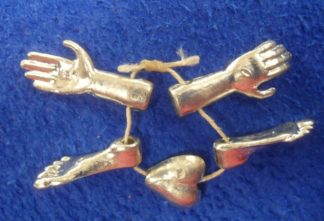
Wounds of Christ Beads or Gauds
$5.00 per set of five Add to cart -
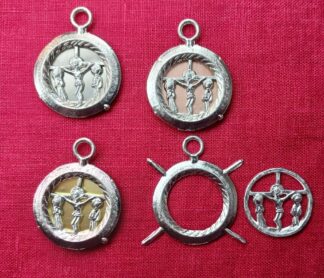
Crucifixion in Pendant Frame
$6.00 – $7.00 Select options -
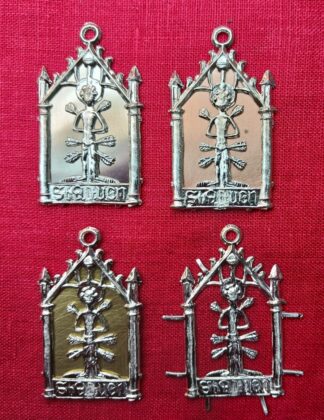
St. Sebastian Pendant
$6.00 – $7.00 Select options -
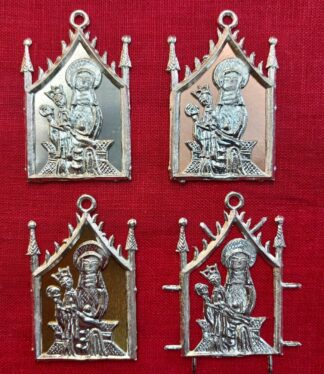
St. Anne Badge
$6.00 – $7.00 Select options -
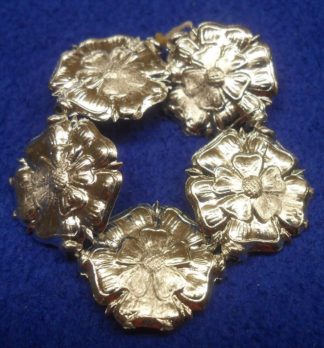
Rose Beads or Gauds
$5.00 per set of five Add to cart -
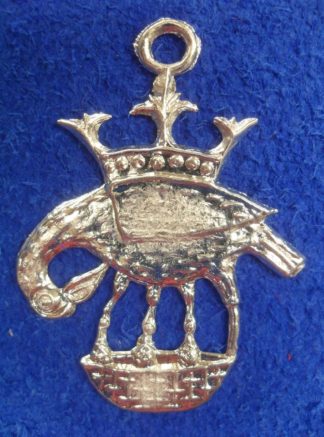
Pelican Pendant
$5.00 Add to cart -
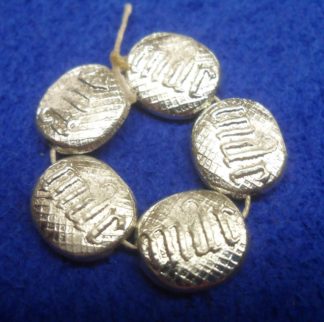
Oval Beads or Gauds
$5.00 per set of five Add to cart -
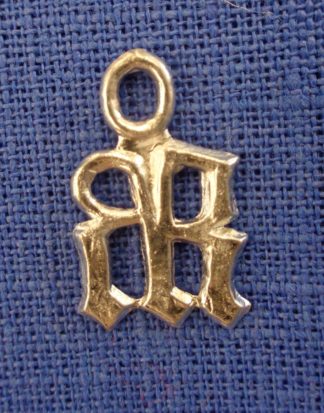
MARIA Monogram Pendant
$3.00 Add to cart -
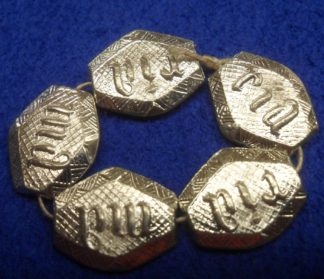
Lozenge Beads or Gauds
$5.00 per set of five Add to cart -
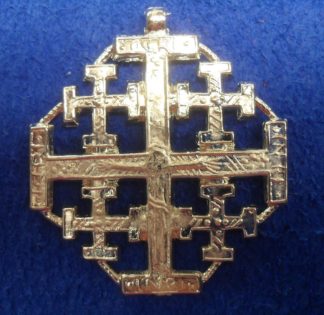
Jerusalem Cross Pendant
$6.00 Add to cart
Showing 1–16 of 18 results

